#Mass Rapid Transit
Text

5 notes
·
View notes
Text
Can't believe I forgot how our beloved MRT (mass rapid transit system, public transport trains in Singapore) can cause interference :")
3 notes
·
View notes
Text
THE FOOD AND MARKETS OF NORTH POINT, HONG KONG: Diary of a Mad Expat, pt. 4
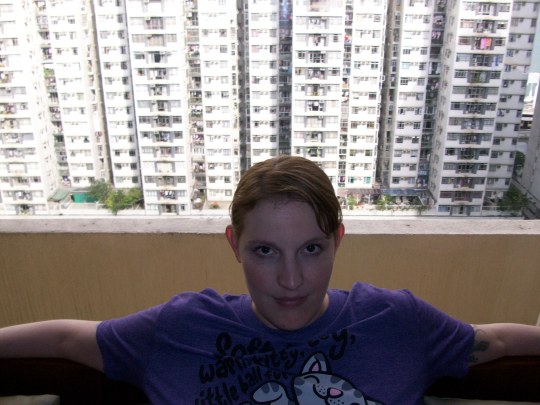
View On WordPress
#breakfast#city garden hotel#coffee#food#hong kong#KFC#mass rapid transit#McDonalds#Michelin star#new territories#North Point#restaurants#roasted pork belly#sha tin#street markets#taxi#tourist
0 notes
Text
~Melaju Saat Hujan~

0 notes
Video
Tokyo 4752 on Flickr.
| www.tokyoform.com | facebook | prints | twitter | 500px | instagram |
#tokyo#tokio#東京#日本#tokyoform#chris jongkind#japan#transit#rapid transit#mass transit#public transit#大量輸送#运输#train#電車#railway#subway#metro#地铁#地下鉄#東京メトロ#JR East Japan#JR東日本#रेलवे#железнодорожный#поезд#транзит#vận chuyển nhanh#tránsito#Tránsito rápido
7 notes
·
View notes
Text
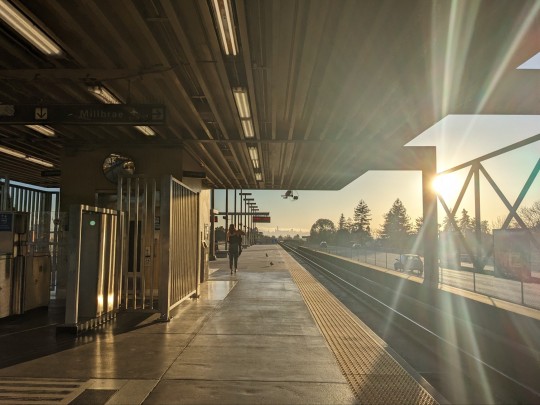
#bart#san francisco bay area#san francisco#east bay#california#bay area rapid transit#sunset#late afternoon#mass transit#transit#train station
4 notes
·
View notes
Text
Exploring the Circle Line MRT Map in Singapore: A Comprehensive Guide
Singapore's Circle Line MRT (Mass Rapid Transit) is a pivotal part of the city-state's highly efficient and comprehensive public transportation system. This guide offers an in-depth look into navigating the Circle Line, places to visit, things to do, and essential tips for travelers and locals alike.
Overview
The Circle Line is a medium-capacity subway line that loops around Singapore, connecting several residential areas to the business district, shopping zones, and key tourist attractions. Its unique 'C' shape enhances connectivity and significantly reduces travel time across the city.
Places To Visit
Marina Bay Sands, Singapore Botanic Gardens, and Haw Par Villa are just a few of the iconic destinations accessible via the Circle Line, each offering a glimpse into Singapore's rich culture, history, and modernity.
Things to Do
From enjoying the panoramic views at the Marina Bay Sands Skypark to exploring the lush greenery of the Singapore Botanic Gardens, the Circle Line opens up a world of activities for every visitor.
Climatic Conditions
Singapore's tropical climate means warm, humid days throughout the year with occasional rainfall. It's essential to plan your travel wardrobe accordingly.
Best Time to Visit
While Singapore welcomes visitors year-round, the months of February to April offer the most pleasant weather for exploring the outdoors.
How to Reach
The Circle Line is accessible from Changi Airport via a transfer at the Paya Lebar MRT station, making it convenient for travelers to reach the city center and beyond.
History
The construction of the Circle Line began in 2000, with the aim of enhancing the reach and efficiency of Singapore's public transport network. Its development is a testament to the city's forward-thinking urban planning.
Food
A journey through the Circle Line is also a culinary adventure, with stations like Bras Basah and Holland Village offering easy access to some of the city's best dining spots.
Shopping
From the high-end boutiques of Orchard Road to the eclectic markets of Bugis, shopping enthusiasts will find their paradise within easy reach of the Circle Line.
Accessibility and Accommodation
With stations equipped with facilities for the differently-abled and a wide range of accommodations nearby, Singapore ensures a comfortable visit for everyone.
Nearby Hotel & Restaurant
Whether you're looking for luxury at Marina Bay Sands or budget-friendly options near Bishan, there's a place to stay for every type of traveler.
Tourist Map
A detailed tourist map can be obtained from any MRT station, helping you navigate the Circle Line and its attractions with ease.
Distance From Major Cities
Singapore's strategic location at the heart of Southeast Asia makes it easily accessible from major cities across the region.
Nearby Places
Exploring beyond the Circle Line? Sentosa Island, Chinatown, and Little India are just a short MRT ride away.
Tourist Attraction
The ArtScience Museum, Singapore Flyer, and Gardens by the Bay are must-visit attractions that showcase the city's blend of culture, science, and nature.
2 notes
·
View notes
Video
Tokyo 4540 da tokyoform
Tramite Flickr:
| www.tokyoform.com | 500px | twitter | | tumblr | prints | facebook | instagram |
#tokyo#tokio#東京#日本#tokyoform#chris jongkind#japan#train#電車#railway#रेलवे#железнодорожный#поезд#transit#rapid transit#mass transit#public transit#大量輸送#运输#транзит#vận chuyển nhanh#tránsito#Tránsito rápido#crowd#人群#foule#толпа#people#人#orang banyak
12 notes
·
View notes
Text


On This Day in New York City History March 24, 1900: The ground was broken by NYC Mayor Robert Anderson Van Wyck at City Hall for NYC's first subway called the Interborough Rapid Transit line (IRT). Established by Rapid Transit Act of 1894, the contract known as "Contract One", started operating the first underground line on October 27, 1904 and was managed by financier August Belmont.
The initial IRT line started at City Hall and followed the current 4-5-6 train local route to 42nd Street. It would then turn west on 42nd and continue north under Broadway on the current 1 train route to 145th Street.
Service into Brooklyn would come with "Contract Two" of 1902 with stops at Borough Hall, Hoyt Street Nevins, Nevins Street and Atlantic Avenue.. our of the original stations City Hall, Worth Street, 18th Street and 91st Street have been closed.
#NYCSubway #InterboroughRapidTransit #IRT #RobertAndersonVanWyck #AugustBelmont #SubwayHistory #MassTransitHistory #TransportationHistory #TrainHistory #NewYorkHistory #NYHistory #NYCHistory #History #Historia #Histoire #Geschichte #HistorySisco
#NYC Subway#Interborough Rapid Transit#IRT#Robert Anderson Van Wyck#August Belmont#Subway History#Mass Transit History#Transportation History#Train History#New York History#NY History#NYC History#History#Historia#Histoire#Geschichte#HistorySisco
4 notes
·
View notes
Text
What types of regional and local transport does Cincinnati need more in the future?
Contemporary city planners across the United States agree that some alternative means of transportation for urban living will be necessary going into the future. The realization that the automobile has destroyed not only urban life but is also destroying the climate has people clamoring for some sort of alternative to the automobile. The issue facing these planners, including us, is what type of transportation should we invest in, and what method of transport can we realistically implement in the cities we serve?

(https://www.geekwire.com/2018/can-technology-drag-us-car-centric-era-regional-transportation-design/)
Considering the American context and strengths of alternative transport
Due to decades of uninhibited car-centric design across all of the United States, many projects to create alternative transportation that require new infrastructure, such as commuter rail, subways, monorail, and street cars, will necessitate to deconstruction of present car-centric infrastructure. While some of the nation’s older cities, designed to accommodate pedestrians and horse-drawn carriages will provide flexibility for future projects, car-centric cities, such as Houston, will require a significant amount of urban activism, grassroots community support, political willpower and funds to get off the ground. It must also be noted that all methods of transportation have strengths and weaknesses and should be implemented with these strengths and weaknesses in mind. A subway will not be a feasible project in a town of only a few thousand, and automobile centric transportation in larges cities of hundreds of thousands will only increase pollution.

(https://www.google.com/search?q=american+transportation&tbm=isch&ved=2ahUKEwjGtfHuxayEAxU61skDHT1oBs4Q2-cCegQIABAA&oq=american+&gs_lp=EgNpbWciCWFtZXJpY2FuICoCCAAyChAAGIAEGIoFGEMyDRAAGIAEGIoFGEMYsQMyDRAAGIAEGIoFGEMYsQMyCBAAGIAEGLEDMgoQABiABBiKBRhDMgoQABiABBiKBRhDMgoQABiABBiKBRhDMgoQABiABBiKBRhDMgoQABiABBiKBRhDMgoQABiABBiKBRhDSK8wUNkQWL0mcAF4AJABAJgBkwGgAYMKqgEDMy44uAEByAEA-AEBigILZ3dzLXdpei1pbWfCAgUQABiABMICBxAAGIAEGBjCAg4QABiABBiKBRixAxiDAYgGAQ&sclient=img&ei=FZjNZYbXF7qsp84PvdCZ8Aw&bih=941&biw=953&client=firefox-b-1-d#imgrc=W_bbgTKMyN17JM)
What to do in Cincinnati?
With all of this in mind, what is to be done in Cincinnati? It is clear that, as planners, we must advocate for a change, but what kind of change? We at Mish Mash believe that Cincinnati will benefit from the introduction of a Bus Rapid Transit system within the city as well as a commuter rail line connecting the city with Columbus. Of these two projects, the introduction of Bus Rapid Transit into the city of Cincinnati will be the most plausible and realistic choice. Considering that a BRT route has been proposed to connect many of Cincinnati’s neighborhoods, there is sufficient political willingness and community support for the introduction of this form of transit. Another benefit of this type of public transit is its ability to integrate with existing car-centric infrastructure in the city. On the other hand, introducing a commuter rail line between Cincinnati and Colombus is less realistic, though not impossible. Though initial construction of the necessary infrastructure would be costly, the benefits of reduced plane travel and linking of the two cities out-weighs this initial cost.
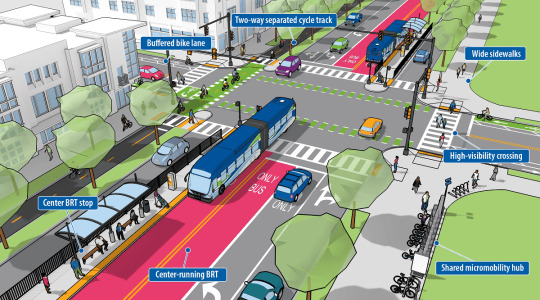
(https://www.poppastring.com/blog/brt-for-columbus)
Do you agree that Bus Rapid Transit is the most realistic option for Cincinnati? Do you also think that commuter rail linking Cincinnati and Columbus would be a worthwhile Project?
0 notes
Text

From this day in 1989, plans for a new railway line underneath London.
Three ideas were being considered.
The favourite is East-West Crossrail, running through Liverpool Street, Farringdon, Tottenham Court Road, Bond Street, and Paddington. At the east end, it'll take over suburban trains to Shenfield or Walthamstow; at the west, it'll head off to Slough and/or Heathrow. There could be a branch from Bond Street to Marylebone, Aylesbury and/or Watford.
North-South Crossrail is a bit less developed: the plan is to run alongside Thameslink trains north of King's Cross, then go through Totttenham Court Road, Green Park, Victoria, and thence to the south-central lines towards Sutton and Crystal Palace.
Chelsea-Hackney line goes from Fulham Broadway to a new station at Chelsea Town Hall, and Victoria. There it'll shadow the Victoria line through Green Park, Tottenham Court Road, King's Cross, before branching off to Angel, Essex Road, Dalston Junction, Hackney Central, and on to Leytonstone and Hainault. A branch could go from TCR to Holborn, Chancery Lane, Farringdon, Old Street, a new station at Shoreditch Church, and Dalston Junction.
The plan is future-proofing the network, which is nearing capacity. According to the consultation, the first lines could be open as early as 1996, and look set to be needed by 2001.
...as we all know, Crossrail was tossed around and put on loads of back-burners. Clive's Underground Guides reminds us how the east-west route was eventually approved in 2004, and Crossrail opened "on time" in 2022, a mere 26 years late.
#crossrail#london#transport#tube#london underground#london crossrail#mind the gap#mass transit#rapid transit#1989
0 notes
Text

No one notice your sadness and tear, but they notice your mistake
0 notes
Text
A Sequence Analysis of the 6x13 Bellarke Reunion
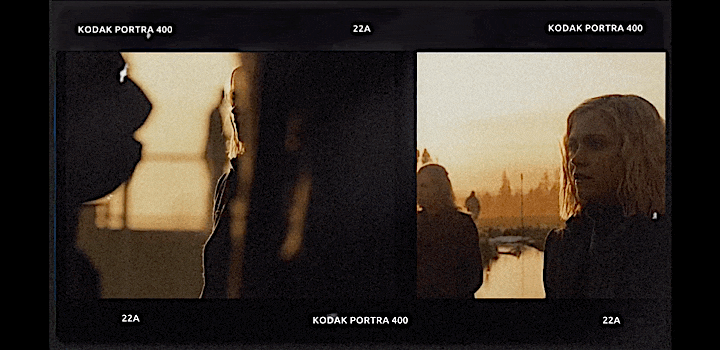
[a.k.a. the final scene of The 100 because Jroth can Jrot in hell]
After a grim conversation between Bellamy and Jordan, the sequence transitions to a warmly lit, wide angle perspective of the reunion at Sanctum. Friends and lovers “meet again,” hugging, kissing, reconciling in a series of action shots: Miller & Jackson, Murphy/Emori & Raven, Jackson & Echo. The sound of their laughter cuts through the uplifting strains of the melody playing [GAITS “Other Side”]. Against the show’s constant onslaught of death and destruction, the beauty in these brief flashes of joy isn’t lost on us; it’s fleeting, but it’s potent. We’re back at the gates of Arkadia in 2x16, only this time around, prospects for the future aren’t quite so bleak, nor is it “getting dark, too dark to see” beneath “that cold black cloud [coming] around” [RAIGN “Knocking on Heaven’s Door”].
Instead, the refrain “I know I’ll see you on the other side” embodies a sense of hope and certainty while also referencing Jasper’s parting words in S4. Unlike his nihilistic outlook, however, the soft, inviting quality of these opening shots seems to suggest that there’s light at the end of the tunnel—a glimpse at the other side of heaven’s door, where peace prevails and war is a distant memory.

As this undertone of cautious optimism resonates, the frame is swallowed up by a dark mass of faceless bodies. The music slows, the crowd parts, and exposed in the center of the frame is Clarke Griffin—a solitary, motionless figure within a stream of movement. Her silent presence isolates her from the liveliness of her surroundings. From the side angle of the camera in the shadowy foreground only her profile is visible, yet the expression on her face is noticeably stunned. We’re left with a sense of anticipation. Where is her gaze focused? What commands her attention so fiercely, stopping her in her tracks and arresting her movements? The anticipation builds, and, with it, the percussive intensity of the music. Soft vocalizations trail after “the other side,” echoing in our ears as we --

Cut to a reverse shot of Bellamy. He makes his way to his people, but it’s clear that the words exchanged with a disillusioned Jordan weigh on him. His eyes are fixed on the ground, brows furrowed, a pensive expression reflecting his weary frame of mind. It’s the aftermath of yet another battle, another spoke on a wheel that spins and spins, unleashing more devastation with each turn. We, as the audience, can only hope that this is the end of its vicious cycle. He’s lost in thought, but a glance ahead has his eyes snagging on something out of shot. No, someone. Bellamy’s steps falter for a beat, then his eyes widen a fraction. He’s mesmerized.
On the receiving end of his gaze, Clarke sharply exhales. The steady pulsing of the music stutters before the rhythm picks up in rapid sixteenth notes, akin to a heartbeat that skips, flutters, then pounds. Energy thrums in the single look that they share; everything else seems to melt away as they fixate on each other, as the tether that binds them together tugs, as the distance between twin souls is bridged.

We’re hit with the crescendo of the music, punctuated by the sustained beat of the drums. It’s booming. A fluid tracking shot follows Clarke as she launches herself away from the crowd into Bellamy’s open arms, and the force of their collision is shown through their synchronized exhalations of breath, through the swaying movement of their bodies pressed tightly together. Like cymbals crashing, they meet in the middle of the frame. The blocking instantly establishes a bubble of intimacy around them that blocks out the rest of the world as they completely obscure the figures (“girlfriend”) in the background. Refracted light slices across the screen at an angle, tracing the points of contact between these two people who radiate warmth and ignite under a single touch.

The music swells. Their embrace is set to the bridge “oh wait for me in fields of gold,” and as they hold each other, lost to a symphony of grief and elation, we get the sense that in each other’s arms these two broken beings are very much found. It’s a homecoming.
Clarke burrows her face into Bellamy’s neck. The sun beaming in the background sends scattered light over his shoulder, captured as flare in the camera lens. Not only does this element add a layer of visual impact and aesthetic beauty to the shot, but it also intensifies the climactic moment when their bodies collide. Tension is built and built until it finally snaps; in doing so, emotional catharsis (for both the characters and for the audience) is maximized. The combination of the lens flare and camera movements makes for a striking, visually dynamic shot with epic romantic overtones. In their reunion a sense of rightness is restored, which has remained a consistent theme of the show for six seasons. When the camera finally settles, what’s captured is the sheer magnetism of the moment. Nearby murmured conversations are unable to overtake the melody, and the bustling movements of the crowd are unable to break that hypnotic hold they have on each other.
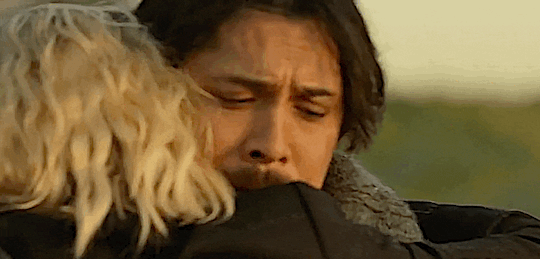
Clarke clings to Bellamy; now, more than ever, it’s evident that her love for him is a refuge, her strength in times of weakness. Even so, sorrow threatens to overtake the solace found in his embrace; Bellamy immediately senses this, rubs a soothing pattern across her back. With brows drawn, he nestles his face against her shoulder as if to will her pain away.

We cut to a dynamic two shot, with Bellamy occupying the left side of the frame and Clarke the right. Both seem reluctant to part, and as they do, harsh realities set in. Bellamy delivers the sobering line, “I heard about Abby.” Like a death knell, its implications land on Clarke and reverberate through this gentle, short-lived moment of peace. Her face crumples. With a despondent shake of her head, she manages, “I tried to do better. I did.” Bellamy can only nod. His strained expression conveys how the mere sight of Clarke’s pain is excruciating to him. A sharp intake of breath from her—“And then I lost my mom.” The tremor in her voice betrays her composure; the words catch in her throat, imparting a strangled quality to the line.
Her mother’s death clings to her. It’s reflected in her head-to-toe black attire, in the misery painted on her face. The weight of impossible decisions looms (how tragic that her mother’s endangerment was what drove her to pull the lever back in Mount Weather), and it seems that, this time around, the burden is too heavy to carry alone. “Tell me it was worth it,” she pleads to Bellamy, barely choking the words out as she battles tears. “Tell—tell me it was worth it.” In deep anguish Bellamy watches Clarke unravel before his eyes. With gentle words he tries to piece her back together. “Hey—Hey, we did. We did do better.”
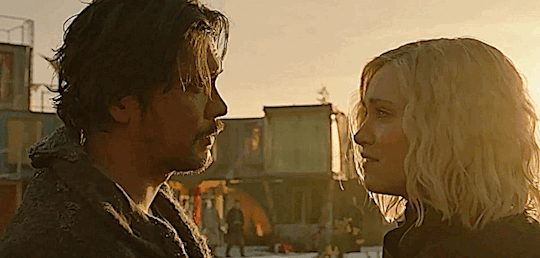
This entire verbal exchange is filmed as a continuous arc shot that swings back and forth on an axis (Bellamy -> Clarke / Clarke -> Bellamy) with the sun acting as the focal point between them. The shot—much like their soul-deep connection—remains unbroken and uninterrupted. Rather than keeping a fixed, static position, the camera’s movements allow us to feel the push-pull emotional tension of the scene. It orbits Bellamy and Clarke in a way that cinematically mirrors the gravitational pull they feel towards each other. For years and years, the two have danced around each other. Though distance and time separated them, they’ve always been inextricably tied together in common orbit. Like binary stars, Bellamy and Clarke orient themselves around a shared barycenter. Their center of gravity—the sun flaring at the center of the frame—coincides with the show’s key thematic elements: forgiveness, rebirth, redemption. The rising of the sun marks the start of a new day and, with it, another chance to do better.
With each dizzying motion of the camera, flashes of light shine between their silhouettes, obscured only to re-emerge seconds later as lens flare; The sequence, as a whole, is a study in subtle contrasts: the contrast between the white sun in the background, the light glinting off the water, the pale gold of the sky + of Clarke’s hair vs Bellamy and Clarke’s shadowy figures captured in low-exposure, the darkness of their clothing, Bellamy’s black hair. This balance of light and shadows/brightness and darkness mirrors the tenuous balance between hope and despair driving the scene. In parallel, the despair that consumes Clarke is a darkness balanced out by Bellamy, who maintains a more optimistic outlook for the future and serves as her guiding light.
[Additional Note: These cinematic contrasts are also a perfect illustration of the concept of yin and yang—the cosmic duality that reflects Bellamy and Clarke’s “head and heart” relationship. The two are equal, seemingly opposing forces but, in actuality, function in such a way that enforces their complementary and interdependent nature: One cannot exist without the other, and both are connected as two halves of a whole in perfect equilibrium. Yin and yang—the head and the heart—do not act as isolated parts, but rather continuously influence and interact with each other to bring forth balance and harmony.]
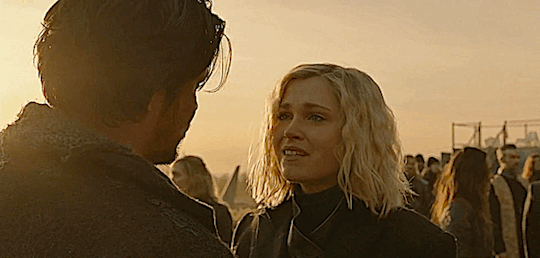
Hope.
In spite of everything, it shows its presence in the vibrant yellow tones of a scene filmed at golden hour; the honeyed glow creates a dreamy, inviting atmosphere, giving off a quality of softness and romanticism that balances out the heaviness of their conversation. Hope echoes in the melody as it conveys the inevitability of reuniting with a loved one in this life or the next: “It’s not the end. It’s all I know…I know I’ll see you, I know I’ll see you on the other side.” (In other words, we will meet again). Hope is felt through the warmth of two lovers embracing, the warmth of the rising sun on their faces.

As we cut to a final close-up shot of Bellamy, he delivers the last line of the scene with resolve: “I have to believe that that matters,” he murmurs softly, brows knit in concern. His eyes search Clarke’s, but her teary gaze is cast low as she chokes down a sob. Her close-up shot captures the internal conflict taking place:
It’s a mental battle—grappling with the urge to fall apart or to suppress the vortex of raw emotion churning inside her. Bleary-eyed, she turns away from Bellamy as if every instinct screams at her to flee, to bear the burden alone. Still, an unspoken conversation anchors her to the spot: “Together.” “I got you for that.” “I need you.” “If I’m on that list, you’re on that list.” “The heart and the head.” “You don’t have to do this alone.” Though devastation lines her face, the morning sunrise bathes her skin in light. Clarke draws a shaky breath. She turns back to Bellamy, then nods: a decision has been made. The camera switches from this close-up of Clarke to a hazy, low exposure medium shot as she leans into Bellamy, drawing strength from him (notice its resemblance to Miller and Jackson’s reunion). They wrap their arms around each other, and their bodies meld together. Clarke tucks her chin onto Bellamy’s shoulder. The immediate relief that she’s flooded with is palpable. She closes her eyes and sighs, and Bellamy rubs her back consolingly. The visual of their merging silhouettes—reminiscent of two suns eclipsing just above the horizon line—composes the final frame of the scene before the shot dissolves with a last “I know I’ll see you on the other side.”

There’s a true sense of finality to this closing shot which sets it apart from others before it—or, rather, establishes it as a culmination of every moment in Bellamy and Clarke’s “exhausting” history to get to this state of perfect alignment. The hug, in particular, serves as a departure from previous seasons’ hug scenes in which an interruption was often required to progress the conflict and reestablish some semblance of distance between the two of them.
In this season, however, though death and distance and other outside forces conspired to separate Bellamy and Clarke...they, against all odds, end it with bodies intertwined, defenses stripped away, never more unified both physically and emotionally: the heart and the head joined together in perfect equilibrium. Two bodies, two souls breathing, moving, thinking, and working as one.

#bellarke#bellamy blake#clarke griffin#bellamy x clarke#the 100#s6 is for hot people with good taste fight me on it
150 notes
·
View notes
Text
Fossil Novembirb 5: It's Getting Hot In Here

Sandcoleus by @drawingwithdinosaurs
Global warming is nothing new for the planet, and even in the Cenozoic we've had our share of rapid warming events - the most notable one being the Paleocene-Eocene Thermal Maximum (PETM). This event, taking place 56 million years ago, was the result of rapid carbon release from the North Atlantic Igneous Province - aka, a volcano exploded, released a bunch of greenhouse gases, and suddenly global temperatures jumped somewhere between 4 and 10 degrees Celsius (depending on location) in a very short period of time - sound familiar?
Given the obvious parallels to the current day, this event has been studied extensively, though only in a few spheres. We know that plants changed dramatically, with broad leafed plants spreading around the world and turning it into a global tropical forest, even at the polls - leading to interesting adaptations towards the strange light cycles at high latitudes. The world was wetter, and greener, and the change lead to the evolution of new herbivory methods in insects. Mammals got smaller, spread everywhere, and diversified. A mass extinction occurred in the oceans, with microorganisms seeing a larger drop in diversity than during the end-Cretaceous extinction. More calcified algae flourished in the more acidic waters.
But what happened to birds?
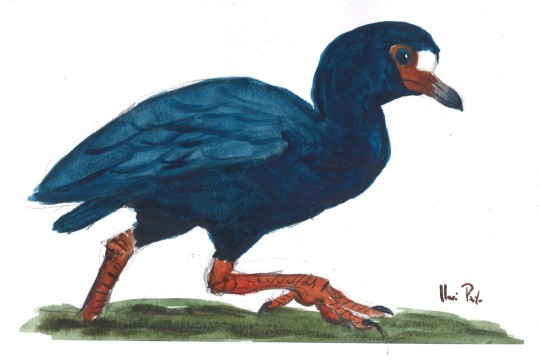
Anachronornis by @otussketching
Turns out, we're not quite sure. Bird fossils before the event are rare, and after are so diverged and varied that it's difficult to know what happened because of the event, and what happened before and just didn't fossilize. Luckily, scientists (... me) are on the case! And there were a few ecosystems that straddle the time around the event, such as the one for this post: the Willwood Formation.
This ecosystem in Wyoming takes place over the late Paleocene through the early Eocene, covering the entire PETM period. And while it showcases many different aspects of this transition, we're of course here for the birds! Not only was there Gastornis, because it was a ubiquitous presence in the Northern Hemisphere following the PETM, there were also many other weird early kinds of birds, all across the avian family tree.

Paracathartes by @drawingwithdinosaurs
Sandcoleus is one of the more notable tree birds from this ecosystem, being a relative of living mousebirds but in North America (rather than Africa, where they are found today). In fact, lots of different tree birds were present, indicating that the current dominance of Passeriformes - so called "perching birds" - was not always the case. In fact, Paracathartes was also present - our first Palaeognath, an early Lithornithid! - and it also may have been able to perch in the trees, and certainly seems to have been a decent flier.
There were also Geranoidids like Palaeophasianus and Paragrus, which were once thought of as pheasant-like and crane-like respectively, but may now actually be Palaeognaths - and some of the earliest known flightless ones to boot! That said, said, other than being long legged flightless birds, we know little about their ecologies - they may have been herbivorous, and as tropical forest dwellers, could have had similar lifestyles to the living cassowary.
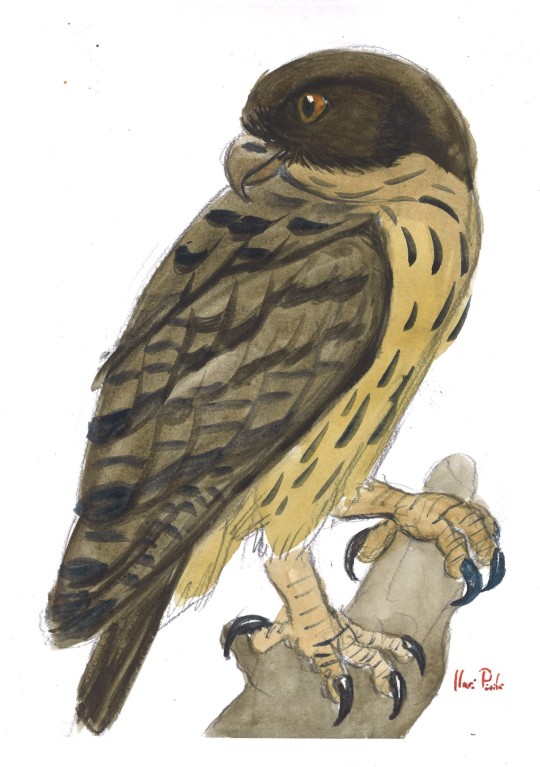
Primoptynx by @otussketching
And, of course, there was also Anachronornis, the half-screamer-half-duck thing, showcasing how waterfowl were experimenting with a variety of different niches during this ecological explosion. And the large variety of new small mammals didn't go unnoticed either - while other early owls are known from Europe, Primoptynx was both the oldest and the biggest, probably thanks to all the new small mammals to eat! There were also possible ground raptors, similar to Bathornis, though they have not been named.
While there are many questions left to answer, it is clear that the PETM had a major effect like it did on everything else on the planet during that time - and the tropical ecologies that they evolved in during the early Eocene would have many implications, especially for where different clades live today!
Sources:
Houde, P., M. Dickson, D. Camarena. 2023. Basal Anseriformes from the Early Paleogene of North America and Europe. Diversity 15 (2): 233.
Mayr, 2022. Paleogene Fossil Birds, 2nd Edition. Springer Cham.
Mayr, 2017. Avian Evolution: The Fossil Record of Birds and its Paleobiological Significance (TOPA Topics in Paleobiology). Wiley Blackwell.
104 notes
·
View notes
Text
ok so imagine if u had this situation

people in the green area would like to cross the river - there are plentiful crossings in the cbd and a few further downstream, but there’s a wide stretch of nothing bar inconvenient commuter rail tunnels
you could just build a standard road bridge connecting the arterials on either side - but that’s a very very bad idea. arterial motor traffic will be attracted and clog the lower-traffic areas. it’s incompatible. a mere pedestrian bridge would be awful value for money - the river is too wide and we need to plug in alternative modes of transport. not everyone is gna want to walk the long-ish length of this bridge
so, let’s build, for example, a modern-style tram system, running down the middle of the boulevardes

it would be pretty easy to make a modern-style tram and pedestrian/cycle bridge. from the middle of the boulevarde, the segregated tramway can turn and leave the road, or even elevate or descend if that tickles your fancy, becoming rails that motors simply cannot go on, preventing them from accessing the bridge. easy as pie
but i’m becoming sceptical of the uniformity of modern-style lightrail tram systems - they’re incredible, they’re worth it, they’re valuable, but their size and cost may be hampering their deployment. i believe smaller, lesser, more classical tram systems are invaluable in complementing the heavier trams - they could be cheaper, they could be deployed far more rapidly, and require far less manipulation of existing infrastructure and construction of new infrastructure, complementing the heavier systems fantastically. essentially - i’m talking busses but plugged in, trolleys 2. for my hypotheticals from here on out, assume the light tram i’m talking about behaves as a trolleybus
so… it’s far harder to segregate a bus per se than a heavy modern tram. they’re designed for the surface streets, where the cars go. all you can really do is put up a sign saying cars are banned, and prosecute the tits off anyone who tries it. one of the only examples of a bus-only bridge i can find is in Perþ, WA - i’m pretty sure i’ve got mutuals out there so feel free to tell me if i’m wrong

this bridge actually crosses a huge freeway intersection - this main road here is feeding into a horrible major freeway brutally smashing its way through the city centre-ish to cross the swan river. those bus lanes, a backbone of these neighbourhoods, need to connect to roads on the other side of the freeway, so, bus-only bridge. motor traffic can happily go elsewhere, with the integrated rapid-transit bus system shaving minutes off its journey times. a win-win under the so-so circumstances of this freeway’s insufferable existence
but… in my scenario, in an incredibly traffic-dense downtown in an area with few connections, with the motors being required to go a far longer way around than other modes - there being a massive, open route to the bridge is just asking to be chanced
if the tramline is in the centre of the boulevarde, it has to turn and cross the busy motor traffic lanes to reach the segregated tramway to the bridge. beyond extremely tight bollards, a lot of red paint, a fucking massive sign, ANPR with heavy fines, and a fucking raisable barrier if it’s needed - how can unauthorised motor traffic be prevented from using the bridge?
it’s easy with heavy trams, that’re hybrids with lightrail. motor traffic simply cannot go on lightrail tracks. without that benefit, if trams were road creatures only, how can a bridge be totally shut off from a thronging mass of motorists fucking desperate to use it?
10 notes
·
View notes
Text
One can’t be conscious to the pleasures and fantasies of this life without being conscious of the pain and suffering. Consciousness is a gift and a curse. 🪬
These recent Pluto transits have been extremely intense. Not to mention we’re nearing the end of Pluto in Capricorn and entering into a new era AKA the age of Aquarius. As I stated before a few months ago: some people will say astrology isn’t real but look at the state of the world right now. Currently, our society is going through new technical advances the human consciousness is evolving at a rapid rate overall. As a collective, we’re all waking tf up!
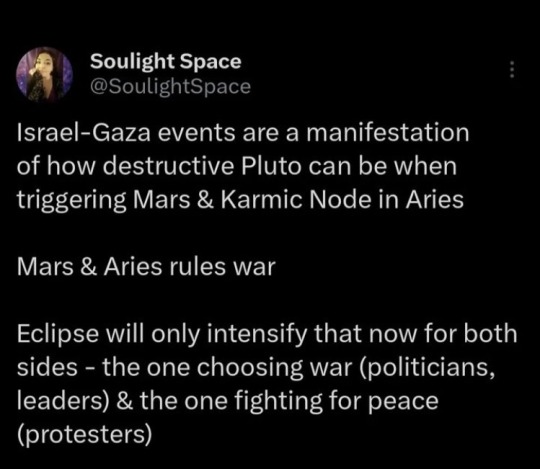


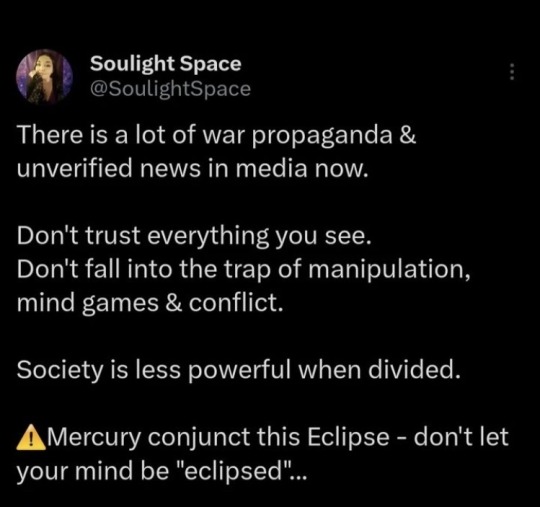

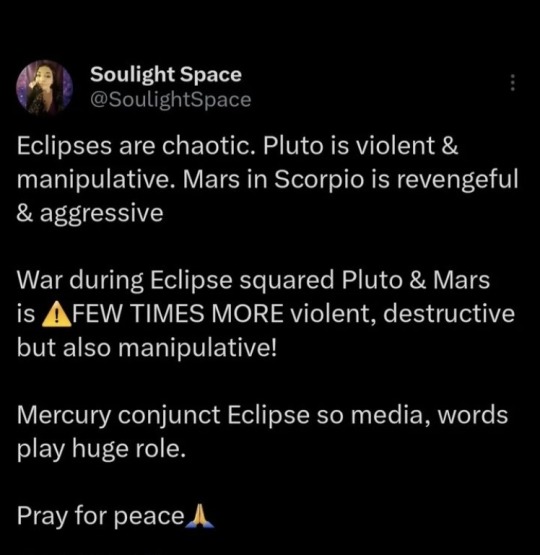
Back in March we were beginning the transition into the age of Aquarius. It transited in Pluto on March 23rd. The last time this happened was during the French Revolution and Industrial Revolution. Aquarius energy inspires freedom, change, and revolt. This is only the beginning I fear but the change that this time will bring will be much needed. 🤍
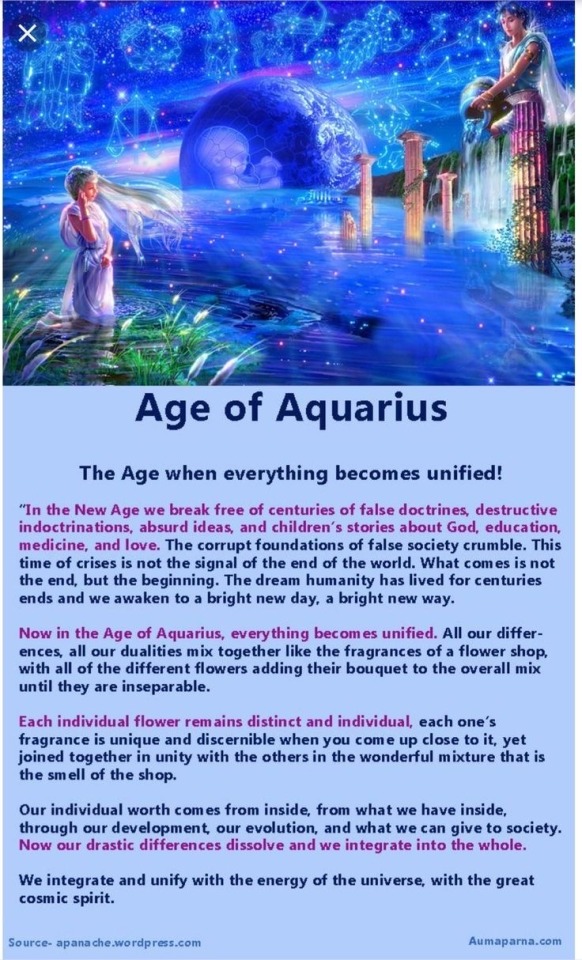
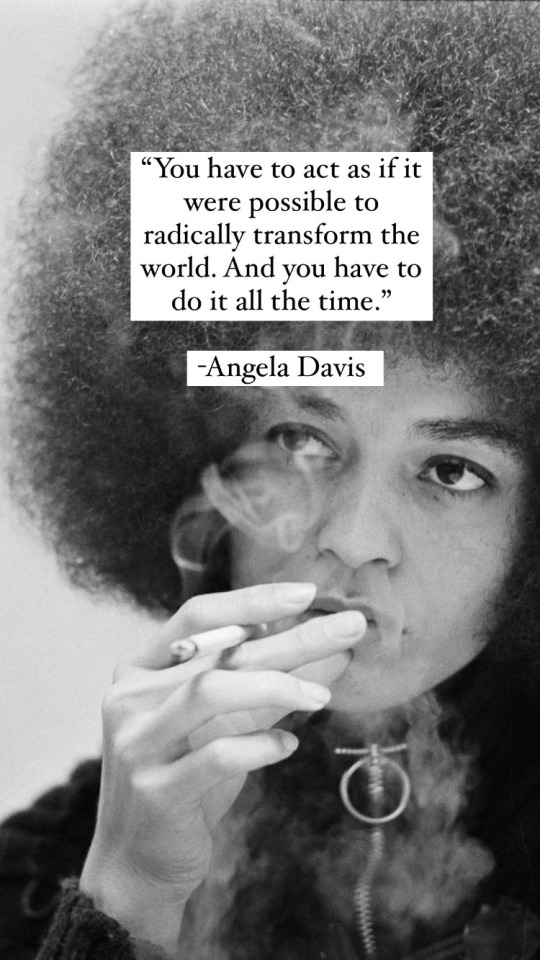
There is always going to be a revolution because as long as there are people in power trying to control the masses there are always going to be people who are trying to break free.
Twitter Source: Soulight Space
#palestine#gaza#astrology#age of aquarius#pluto transit#mars transit#free gaza#free palestine#astro posts#spirituality#astroblr
32 notes
·
View notes